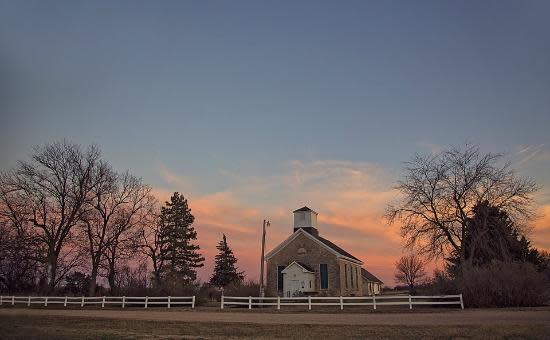History
Manhattan establishment in Kansas Territory
Manhattan emerged before statehood amid political turmoil and pre-Civil War bitterness
Manhattan’s unofficial establishment, circa July 4, 1855, was 5½ years prior to Kansas’ entry to the Union. Months later in 1855, Riley County was organized with townships of Dyer, Manhattan, Ogden and Pierce. Manhattan was recognized as a 3rd Class City early the next year and shortly thereafter became the county seat … not without bitter, political dispute. Kansas’ path to statehood, too, was rocked by controversy between abolitionists and pro-slavery, as these vicious factions often clashed, determined to hold sway over the fate of the Sunflower state’s entry as the 34th state to the United States of America.

Bleeding Kansas and Underground Railroad among Manhattan's Civil War-era ties
Kansas was a rollicking place about 160 years ago, when the city of Manhattan was first getting its legs amid a raucous, five-year lead-up to Kansas’ territorial existence followed by statehood. At a time when “undocumented” natives existed in numbers greater than most city populations, the state’s rough-hewn survival was laid bare by barbaric Bleeding Kansas incidents and the prelude to a nationwide strife with Civil War.
Freedom, education the basis for city's origination
Manhattan’s very formation was the initiative of abolitionists with freedom and education at the core of their mindset. Regional political factions were unyielding as Manhattan’s city roots took hold. This required four constitutional conventions and nearly five years to ratify a governing document. Slavery was the crucial obstruction, as pro-slavery agencies from Missouri infiltrated election-day voting to cause upheaval in the results. The area known as Pawnee, located on ground that is now part of Fort Riley, was the first territorial capital of Kansas. The multiple conventions assembled first in Topeka, then Lecompton and Leavenworth, and ultimately Wyandotte in 1859 to submit a state constitution for U.S. statehood.
Early war rumblings encouraged free-state movement
The state constitution was passed by Congress and granted ultimate approval by outgoing President James Buchanan, who was not adored by many among the free-state movement. As Abraham Lincoln had triumphed in the 1860 election, South Carolina led 10 more states toward secession and eventually hostilities that initiated Civil War. Thus, the celebration was muted as prospect of war emanated from Manassas, Virginia, to Manhattan, Kansas.




